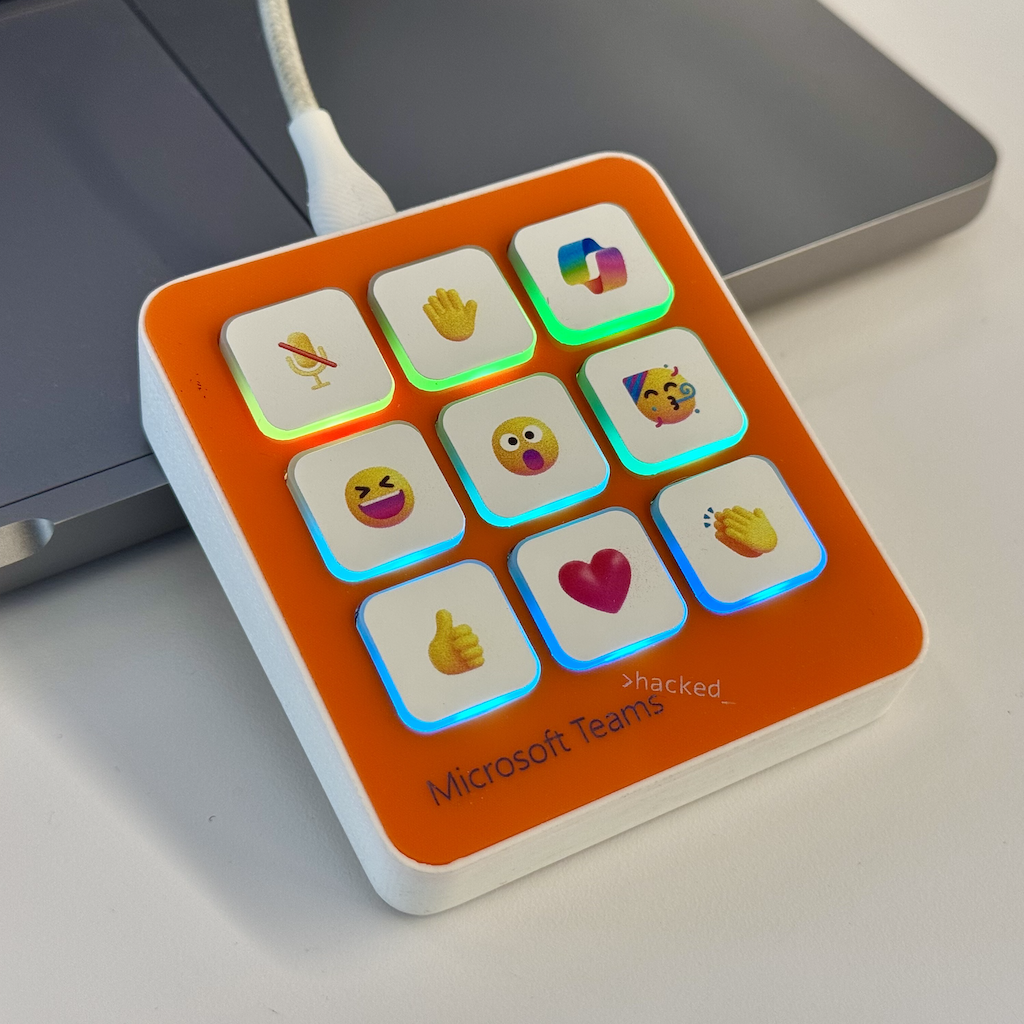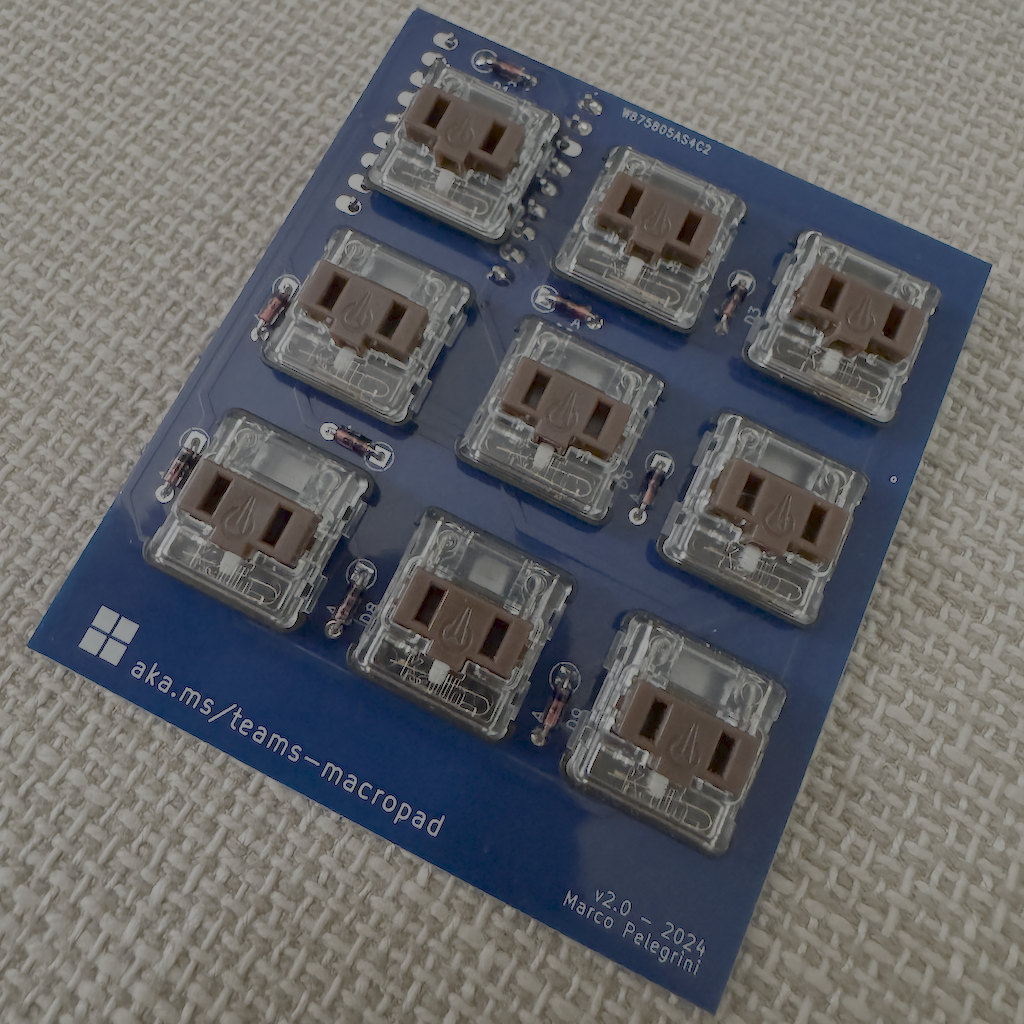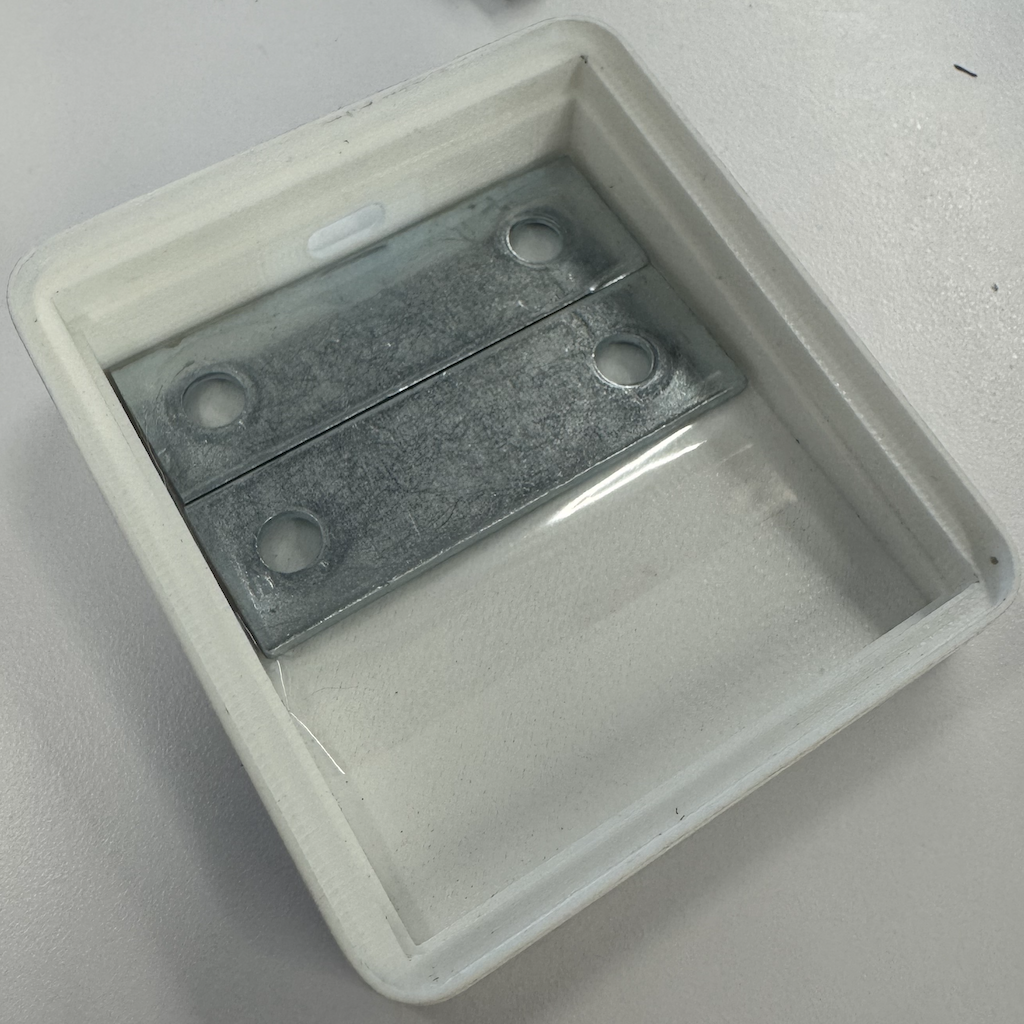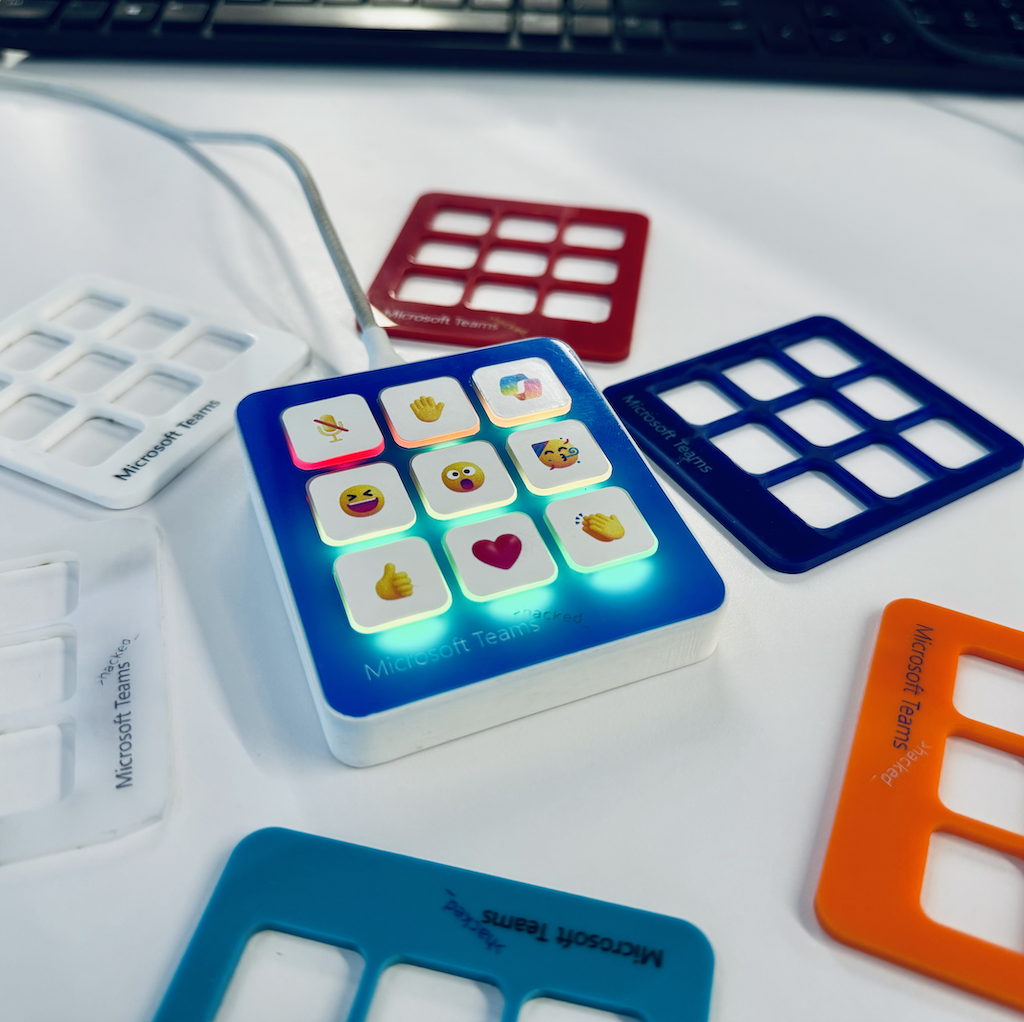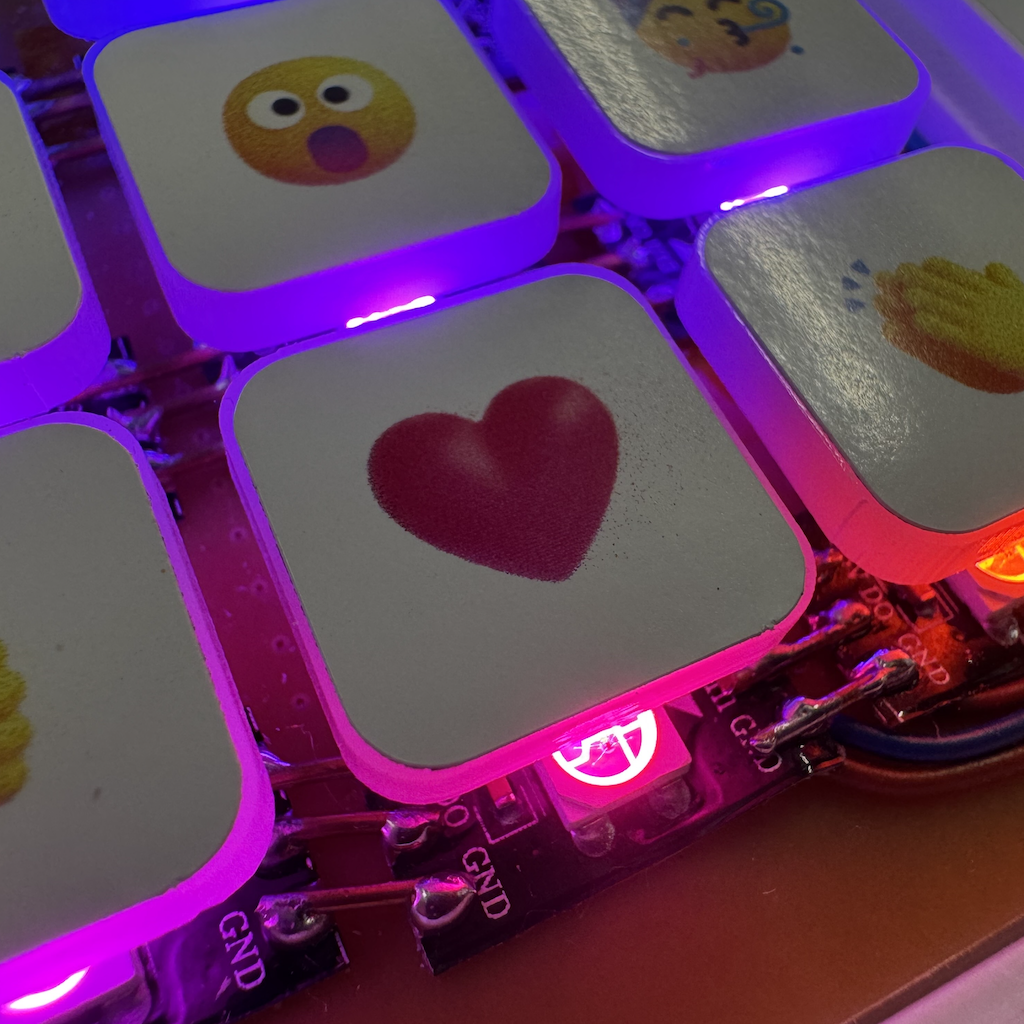Software
Initial Setup
The MarcoPad uses the QMK as the firmware to control the function keys and the backlit.
Basic setup
Follow QMK's instructions for Prerequisites, Preparing your environment and Setting up QMK.
Entering flashing mode
The first time you connect the MarcoPad to your computer, your should see a volume/drive named "RPI-RP2".
If it's not showing up, try pressing and holding the BOOT button, then short press the RESET button on the RP2040 Zero.
If the issue persists, you problem might be with the hardware itself, connections or soldering. Please check everything.
Flashing the firmware
Once installed, go to QMK's home folder:
❯ qmk cd
Flash the firmware:
❯ make marcopad:default:flash
✅ Done, your MarcoPad is ready for use.
By default, the keys are mapped to 1-9, try them out to make sure everything works.
Keymap configuration
QMK is very flexible, extensible and configurable. You can explore the QMK's documentation for advanced setup.
To start you'll want to at least assign a key/function to each key.
Create a new keymap without backlit
❯ qmk new-keymap -kb marcopad -km [your keympap name]
The new keymap is based on the default keymap, without backlit enabled. If you opted for adding backlit, use the next option
Create a new keymap with backlit enabled
❯ cp -r keyboards/marcopad/keymaps/backlit keyboards/marcopad/keymaps/[your keymap name]
Edit the layout
Edit the keyboards/marcopad/keymaps/[your keymap name]/keymap.c file.
You'll now replace the key mappings in the following section of the file:
[0] = LAYOUT_ortho_3x3(
KC_P7, KC_P8, KC_P9,
KC_P4, KC_P5, KC_P6,
KC_P1, KC_P2, KC_P3
)
For each entry in the "matrix", replace with one of the available keycodes.
You can also use modifier keys and other QMK features to define the key's function.
For instance, if you want be bottom-left key (currenty KC_P1) to function as "copy", replace KC_P1 for LCMD(KC_C) on macos or LCTL(KC_C) on Windows. The "paste" command would be CMD(KC_V) on macos or LCTL(KC_V) on Windows.
Flash your custom firmware:
❯ make marcopad:[your keymap name]:flash
✅ Done, your MarcoPad is ready for use.
